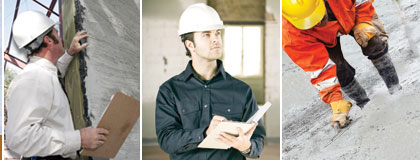Infrared Thermography
Infrared thermography is a non-invasive technology that is used to pinpoint problem areas in building systems. Its ability to detect the smallest temperature variations allows the observer to see anomalies that are invisible to the naked eye. In the hands of a properly trained thermographer, infrared can become a powerful investigative and diagnostic tool by saving time and money when compared to traditional invasive testing methods.
Some of the most common uses in the building sciences field are:
Detection of heat loss
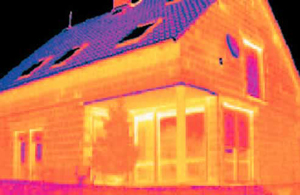 Missing or insufficient insulation, air leaks around windows and doors can cause significant heat loss. Infrared thermal Imaging can detect where these problems exist and the level of heat loss being generated. Corrective measures can be easily identified to achieve maximum results and cost savings.
Missing or insufficient insulation, air leaks around windows and doors can cause significant heat loss. Infrared thermal Imaging can detect where these problems exist and the level of heat loss being generated. Corrective measures can be easily identified to achieve maximum results and cost savings.
Detection of water infiltration
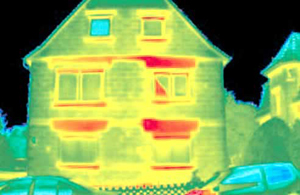 The number one cause for problems and damage in buildings is water infiltration. Our buildings are subjected to some of the harshest weather conditions on earth going from -30C to +35C combined with substantial amounts of rain, snow, ice and high winds. These elements put a tremendous strain on the building envelope which is meant to protect us. Through wear or improper installation these can begin to lose their integrity and start allowing water to enter the building. Sometimes the leaks are immediately visible, in other cases the water enters and remains concealed, often trapped inside cavities. Over time trapped water will begin to cause damage, rotting the wood structure and allowing mould to grow inside walls.
Because water is highly conductive infrared thermography can detect its presence through heat signature emissions allowing to pinpoint its location and path. No other diagnostic tool is better at locating water infiltration.
The number one cause for problems and damage in buildings is water infiltration. Our buildings are subjected to some of the harshest weather conditions on earth going from -30C to +35C combined with substantial amounts of rain, snow, ice and high winds. These elements put a tremendous strain on the building envelope which is meant to protect us. Through wear or improper installation these can begin to lose their integrity and start allowing water to enter the building. Sometimes the leaks are immediately visible, in other cases the water enters and remains concealed, often trapped inside cavities. Over time trapped water will begin to cause damage, rotting the wood structure and allowing mould to grow inside walls.
Because water is highly conductive infrared thermography can detect its presence through heat signature emissions allowing to pinpoint its location and path. No other diagnostic tool is better at locating water infiltration.
Detection of electrical problems
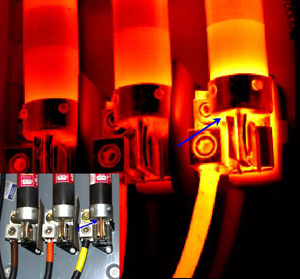 Faulty electrical installations or components are often the cause for building fires. A thermal scan of electrical components is the easiest and fastest way of detecting any anomalies. Whether the problem is a poor connection, faulty breaker or improperly serviced aluminum wiring, infrared thermography will immediately detect its presence and location.
Faulty electrical installations or components are often the cause for building fires. A thermal scan of electrical components is the easiest and fastest way of detecting any anomalies. Whether the problem is a poor connection, faulty breaker or improperly serviced aluminum wiring, infrared thermography will immediately detect its presence and location.
Roof Scans
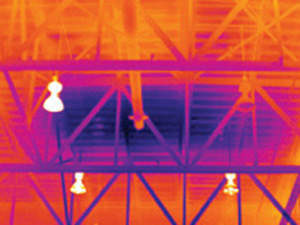 Visual inspections of flat roof systems usually reveal very little information until it’s too late. Whether the roof membrane is built-up asphalt, modified bitumen, PNMD or other, infrared scanning can help detect water infiltration under the membrane. Because flat roof systems usually go from $10,000 up to $100,000 and beyond for larger buildings, knowing if the membrane is actually due for replacement or if only a small area needs to be repaired can save significant amounts of money.
Visual inspections of flat roof systems usually reveal very little information until it’s too late. Whether the roof membrane is built-up asphalt, modified bitumen, PNMD or other, infrared scanning can help detect water infiltration under the membrane. Because flat roof systems usually go from $10,000 up to $100,000 and beyond for larger buildings, knowing if the membrane is actually due for replacement or if only a small area needs to be repaired can save significant amounts of money.
